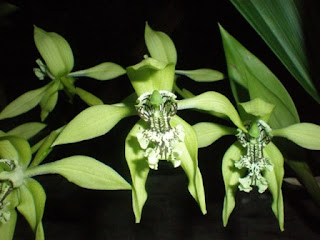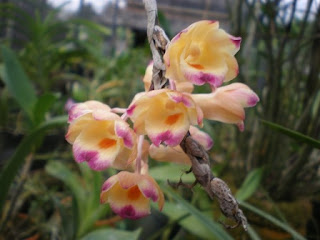
This species is very common in Java island, and the Javanese has long ago been cultivating it as ornamental plant. The Javanese name it "anggrek tanah" which means "terrestial orchid". It is a little bit confusing since a lot of orchid are essentially terrestial-type, such as Calanthe sp, Phaius sp, Arachnis sp, and so on. However, the common understanding here in Java is, Spathoglottis = anggrek tanah = terrestial orchid. What about the other terrestial orchid? Go and find another term for them...:-)
I have three species of this Spathoglottis, the first is this one with white flower, the others are with white dark purple and yellow flower(Spathoglottis kimbaliana). The yellow one is very rare because I guess it is not native to Java (or Indonesia). But the white and the purple is easily found along the riverbank of wild forest at the mountain.




































